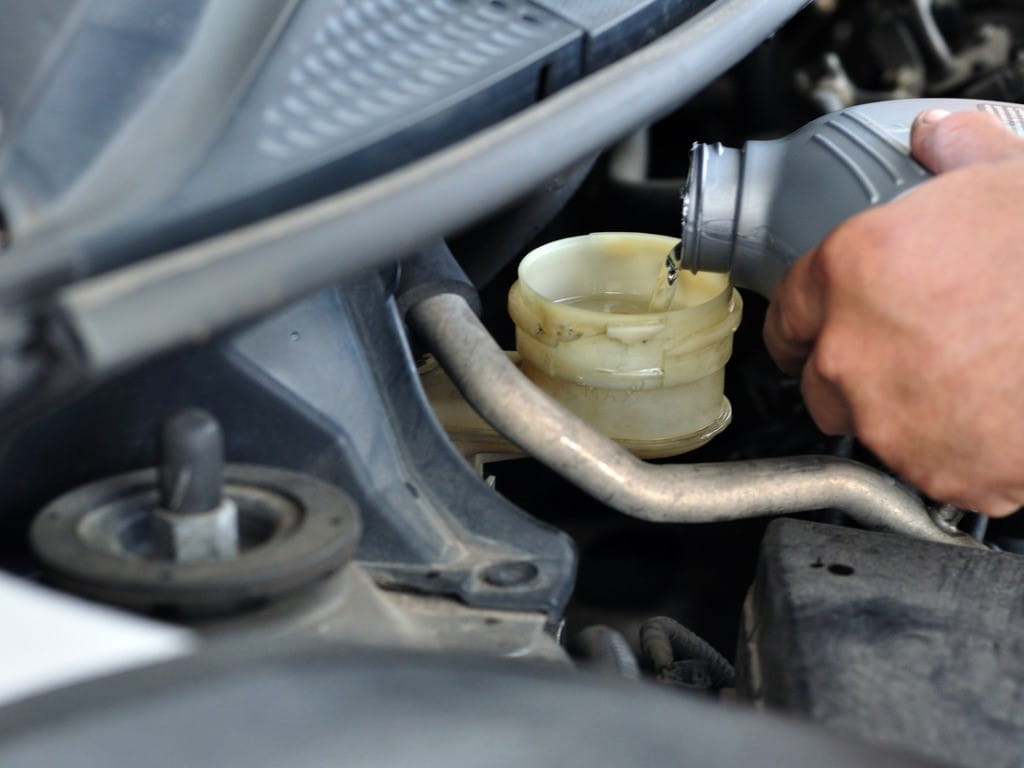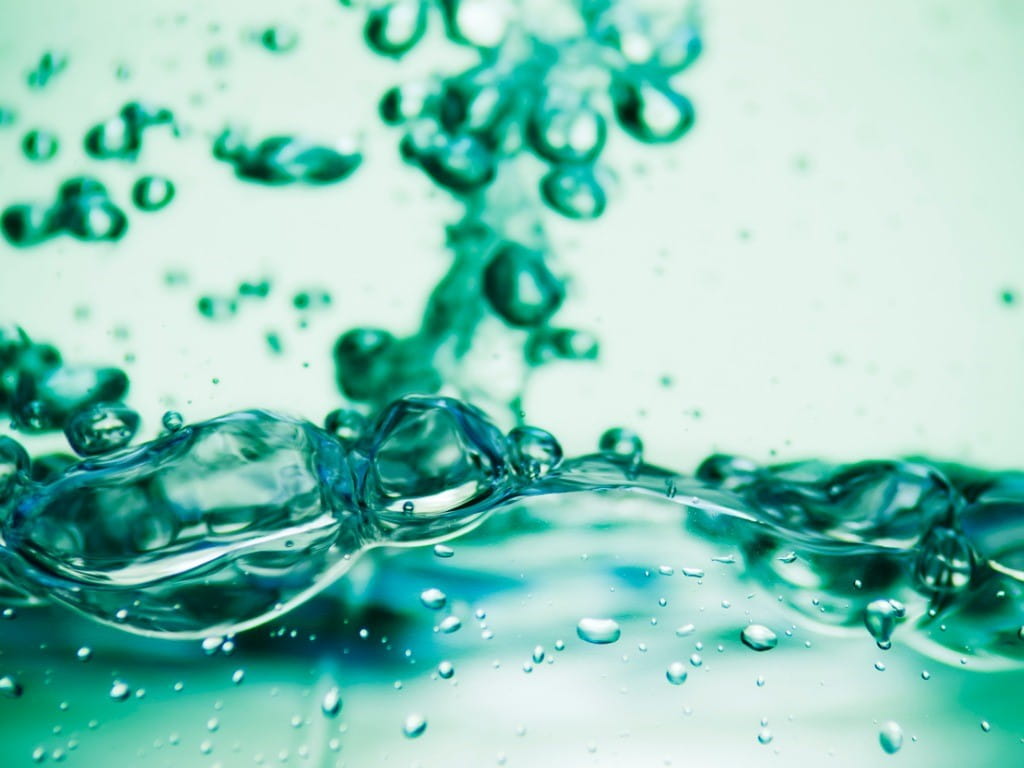Hydraulic Fluids are Potentially Dangerous

The Bottom Line
Hydraulic fluids are used for the transmission of power, which is captured when the fluid is pushed from one confined place to another using pressurized tanks, pistons, and tubing. Hydraulic fluids also keep parts lubricated, transfer heat, and remove impurities. There are many types of hydraulic fluids used for different applications, and all should be considered potentially dangerous.

The Full Story
Hydraulic fluids are used for the transmission of power, which is captured when fluid is pushed from one confined place to another through pressurized tanks, pistons, and tubing. Hydraulic fluids also allow machines to use less energy by keeping parts lubricated, transferring heat, and removing impurities.
Some common hydraulic fluids are water, silicone, petroleum oil, synthetic hydrocarbons (such as polyalphaolefins or PAO), and even vegetable oil. If someone is exposed to hydraulic fluid on the skin, a soap and water wash should be all that is needed. Occasionally, some hydraulic fluids can cause skin drying and irritation. Eye exposures tend to resolve with gentle flushing of the eye with water. Doing a gentle eye rinse for 15 minutes with water at a comfortable temperature is recommended. You don't have to hold the eye open! Just let the water run over the eye and try to blink occasionally under the stream of water. Just make sure to do it for the full 15 minutes. Oily substances can leave a film on the eye, making vision temporarily blurry.
Swallowing one of the oily hydraulic fluids, like the synthetic hydrocarbons, is potentially dangerous. These products have a tendency to get into the airway more easily than water-based substances. Remember, your food pipe is right next to your air pipe. If someone coughs hard or vomits after swallowing the hydraulic fluid, they are in danger of aspiration – getting hydraulic fluid into the lungs. If the substance is swallowed and goes to the stomach, diarrhea is usually the only adverse effect.
Some lesser known types of hydraulic fluids are the chlorinated hydrocarbons and phosphate esters. These chemicals share similarities with some pesticides and can have toxicity in humans when swallowed or if enough mist is inhaled. However, just as safer alternatives have become more common for pesticides, hydraulic fluid industries are promoting safer substances as well.
Overall, most hydraulic fluids are not particularly dangerous. However, they are not meant to be touched directly, swallowed, or inhaled. Used hydraulic fluid can contain metal fragments and waste materials collected during the time of use. Even if water is the hydraulic fluid, you would not want to handle it after it has been used due to these possible contaminants. Skin exposure to used hydraulic fluid can be managed by washing your hands with soap and water – but it is best to limit unnecessary exposure to hydraulic fluid.
If someone has been exposed to hydraulic fluid at work or at home, please log on to the webPOISONCONTROL® online tool for guidance or call Poison Control at 1-800-222-1222. Whether you log on or call, expert assistance is available 24 hours a day.
Pela Soto, PharmD, BSHS Pharmacogenomics, BS Microbiology
Certified Specialist in Poison Information
Poisoned?
Call 1-800-222-1222 or
Prevention Tips
- Do not handle any hydraulic fluids without skin protection.
- Leaking hydraulic fluid might need specific types of cleanup. Do not attempt to remove spilled hydraulic fluid until it has been properly identified.
- Even low-toxicity hydraulic fluids can be become dangerous due to metal and chemical contamination picked up during use. Treat all used hydraulic fluids as potentially toxic.
This Really Happened
A 50-year-old man went to an ER after he was splashed with hydraulic fluid at work on his skin and in his eyes 5 hours earlier. He reported that he washed his skin well at the time but that his skin was still itchy and his eyes were irritated. The ER physician called Poison Control, which said that, based on the timeline and mild nature of his symptoms, he was unlikely have any issues. An eye exam and lotion for the skin were recommended. He had normal vision. He was given antibiotic eye drops, acetaminophen for pain, and a dose of a corticosteroid for inflammation.
For More Information
References
Totten GE, De Negri VJ, editors. Handbook of hydraulic fluid technology. 2nd ed. Boca Raton (FL): CRC Press; 2012.
Wexler P, editor. Encyclopedia of toxicology. Encyclopedia of toxicology. 3rd ed. Cambridge (MA): Academic Press; 2014.
Poisoned?
Call 1-800-222-1222 or
Prevention Tips
- Do not handle any hydraulic fluids without skin protection.
- Leaking hydraulic fluid might need specific types of cleanup. Do not attempt to remove spilled hydraulic fluid until it has been properly identified.
- Even low-toxicity hydraulic fluids can be become dangerous due to metal and chemical contamination picked up during use. Treat all used hydraulic fluids as potentially toxic.
This Really Happened
A 50-year-old man went to an ER after he was splashed with hydraulic fluid at work on his skin and in his eyes 5 hours earlier. He reported that he washed his skin well at the time but that his skin was still itchy and his eyes were irritated. The ER physician called Poison Control, which said that, based on the timeline and mild nature of his symptoms, he was unlikely have any issues. An eye exam and lotion for the skin were recommended. He had normal vision. He was given antibiotic eye drops, acetaminophen for pain, and a dose of a corticosteroid for inflammation.
